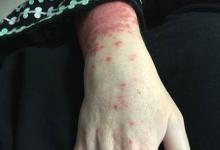New pieces added to the Pre-RA puzzle Save

We know that pre-RA is a definition that stands under a large umbrella, ranging from asymptomatic individuals with ACPA positivity to individuals with symptomatic pre-clinical synovitis. It is also known that, even though we cannot at this stage intercept the development of clinical RA -as proven by numerous negative interception studies- we currently do not have reliable biologic tools to predict which at-risk individuals will develop RA in the future. This remains a challenge and a very clear unmet need, both from a clinical prognosis perspective and for clinical trials and future therapeutic applications. Targeting high-risk patients would be extremely helpful for interception interventions.
So how can we predict the transition from the at-risk state to clinical RA outside the realm of clinical, conventional serological (RF/anti-CCP) or imaging (US/MRI synovitis) biomarkers?
Here is a summary of what ACR 2025 is presenting to us, using multi-omics, immunologic, and microbiome-derived approaches.
In abstract #0774, Inamo and colleagues present cellular and molecular predictors in CCP3⁺ individuals involved in the StopRA study (an interception study using HCQ, with negative results). Using single-cell multi-omics and cytometry, investigators identified distinct immune signatures in CCP3⁺ at-risk individuals who later developed RA. These included expansion of T peripheral helper (Tph) cells, cytotoxic CD8⁺ T cells (GZMK⁺XCL1⁺CD57⁺), and increased chromatin accessibility at immune regulatory loci such as PTPN22. A predictive model combining Tph frequency, CCP3 level, and RF distinguished converters from non-converters with an AUC of 0.77. These data suggest that aberrant T-cell activation and epigenetic priming precede the onset of synovitis and could inform preventive targeting.
In abstract #0775, presented by Ormseth et al., the authors describe microbial RNA signatures that could be protective against RA progression. In a cohort of 60 CCP3⁺ patients with no signs of synovitis who did not develop RA, the plasma microbial tRNA-derived small RNA tDR-1, originating from Proteobacteria, was significantly enriched compared to converters. Higher tDR-1 levels predicted non-progression with an AUC of 0.86 and were associated with suppression of interferon-response genes in macrophages. These results point toward microbiome-derived RNA signalling as a potential anti-inflammatory mechanism modulating RA risk.
In abstract #0832, Sharrack and colleagues propose PAD4 as a pre-clinical marker and potential therapeutic target in pre-RA. In a cohort of 79 CCP⁺ symptomatic individuals without synovitis, higher serum PAD4 (but not PAD2) levels predicted progression to arthritis, reaching levels comparable to early RA patients. PAD4 elevation differentiated future converters from non-converters (p=0.022), suggesting PAD4 may represent both a predictive biomarker and a therapeutic target in pre-RA individuals.
Finally, in abstract #0833, presented by Wilson et al., the authors analysed the link between lung immunobiology and sputum biomarkers of RA transition. In a cohort of 98 CCP3⁺ individuals without synovitis, elevated sputum anti-CCP-IgA/IgG and NET-associated proteins (nucleosomes and citrullinated nucleosomes) were associated with future RA development, supporting the lung as a site of early immune activation. Interestingly, sputum calprotectin and neutrophil elastase (exNE) were inversely correlated with time to RA onset, possibly reflecting dynamic local clearance before joint inflammation.
Together, these abstracts illustrate the complex interplay between adaptive immunity, mucosal and microbial factors, and enzymatic citrullination that defines the pre-clinical RA landscape. Beyond conventional serologic markers, novel cellular (Tph cells, cytotoxic CD8⁺ subsets), molecular (PAD4, microbial sRNAs), and compartment-specific (sputum NET proteins) signatures are emerging as promising tools to refine risk stratification and guide future interception strategies.










If you are a health practitioner, you may Login/Register to comment.
Due to the nature of these comment forums, only health practitioners are allowed to comment at this time.